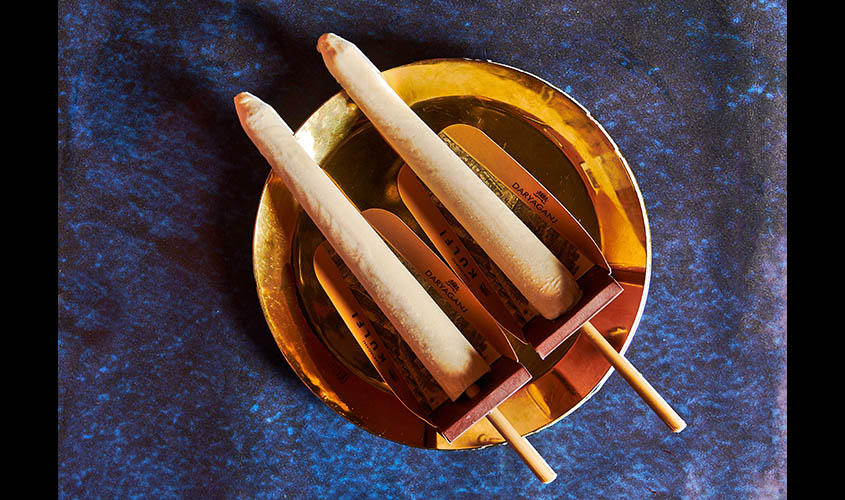For most of us, alcohol serves as an accompaniment to dishes. But there are chefs who regularly make use of it as a flavourful ingredient. Cooking food in alcohol is an old technique that is now being explored at various Indian restaurants. As consumer preferences are evolving and food trends are changing, chefs are experimenting to bring new combinations of alcohol with food. And for good reason. Just like salt, alcohol is known to enhance the flavours of the dish it is added to.
The use of alcohol has been limited, if not completely absent
But cooking with alcohol can be tricky—from choosing a spirit that complements other ingredients in the dish to figuring out the correct amount which won’t overpower the dish.
Ritesh Negi, corporate executive chef, Radisson Blu MBD Noida, gave some insights into how chefs are experimenting with alcohol. “Nowadays, a lot of flavoured liquors are used in making new recipes. For example, champagne and Sambuca (anise-flavoured liquor) along with some light fresh cream are used for the preparation of Pan Seared Fish. Then, chicken with cinnamon flavoured whiskey and chorizo with rum gives additional punch. Fish stew and broths are cooked with really nice and flavoured white wines. Even chocolates are filled with exciting alcoholic flavours now. So definitely, the trend is catching on, and I personally believe that the use of alcohol and flavoured liquors in correct ratio becomes a big game-changer for the final flavour of food.”

There are various styles of using alcohol in a chef’s kitchen. These include deglazing, braising, sautéing and flambé (flaming liquor) to intensify the flavours and bring character to the dishes. This is possible because of the unique properties of alcohol, which bonds well with water and fat molecules. As a result, it acts as a conduit between flavours and the ingredients that are soluble in water, thus increasing flavour penetration. Alcohol also evaporates when cooked, leaving behind a subtle taste and smell.

Chef Saurabh Udinia of Farzi Café pointed out that the rising popularity of using alcohol as an ingredient has to do with its versatile uses. He said, “Cooking with wines enhances the depth of the dish—white complementing seafood and red pairing well with red meats. Alcohol can be used in any stage of cooking, right from marinations and sauces to beer batters, bringing out the best of the pasta, Bolognese sauce tempered with red wine to British beer batter fried cod and chips, thus making it a popular culinary ingredient. I use local fermented rice beer to finish bamboo rice and serve it with Naga Pork. We also flambé the Tandoori Raan in our kitchen to give a new dimension and richness to the dish.”
While Indian dishes containing alcohol have been served in foreign countries for long, it wasn’t until recent years that these versions reached India. According to Chef Ashish Singh of Cafè Delhi Heights, the use of vodkas and bourbon whiskeys in Indian cooking is becoming common practice. His signature dish is a vodka-based penne pasta called Penne Alla Vodka. The creamy and bright Italian delicacy tastes great with a mild vodka flavour and a flambé aroma.

In addition to Indian dishes, global cuisines made with alcohol as an active ingredient can also be savoured in Delhi. Soy Soi serves traditional Japanese dishes prepared with rice wines such as sake and mirin. These wines have a smaller percentage of alcohol, have a high sugar content and are specifically used for cooking. Chef Rahul Srivastava, of Soy Soi said, “Both sake and mirin are often used in marinades for meat and fish to tenderise and remove their smell. Alcohol evaporates with the meat/fish odour. We usually add sake and mirin to the soup stock, sauces, nimono (simmered dishes like Nikujaga) and yakimono (grilled dishes like Teriyaki Chicken).”
Alcohol is now part of entire food menus at major restaurants. It is widely used in the preparation and cooking of dishes. Chef Anas Qureshi of Molecule Air Bar, Gurgaon, said, “In a marinade, alcohol helps to season the meat and carry flavour (not tenderise). It functions similarly in cooked sauces, making the food smell and taste better. Its enhancement of flavour perception is evident. When you deglaze a pan with wine after searing meat, not only are you capturing the proteins stuck to the bottom of the pan, but you’re also dissolving them in alcohol, which carries additional flavour to the sauce. If you deglaze with a non-alcoholic liquid such as broth, water or fruit juice, the flavour of the sauce won’t be as intense.”
His favourite dish to prepare with alcohol is Butter Poached Chilli Garlic Prawns, which is deglazed with white wine. Here, prawns are slowly poached in clarified butter with dry red chilli flakes, garlic cloves and peppers so that they soak in all the flavours from the butter and stay moist at the same time while cooking. Then once the prawns are cooked perfectly, finish the dish on a high flame with a dash of white wine and season the dish.
Growing up, I thought alcohol was used only in desserts. The only part of the food menu that mentioned alcohol was the dessert section. To date, most people in India are familiar with just desserts containing alcohol. For example, it’s common knowledge that special liquors are responsible for the rich taste of Tiramisu.
Many restaurants continue to offer alcohol-infused Indian desserts. For instance, Daryaganj restaurant in Delhi’s Aerocity serves Baileys Kulfi, a traditional dessert with a modern twist. Keeping the taste of classic Kulfi intact, the chefs have enhanced it with layers of Baileys liquor, providing an elevated experience and taste.

